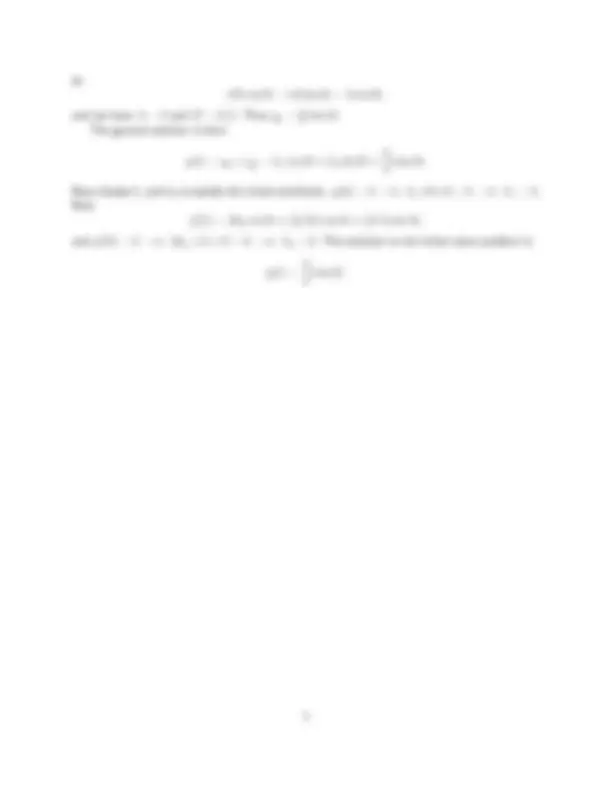



Study with the several resources on Docsity

Earn points by helping other students or get them with a premium plan


Prepare for your exams
Study with the several resources on Docsity

Earn points to download
Earn points by helping other students or get them with a premium plan
Community
Ask the community for help and clear up your study doubts
Discover the best universities in your country according to Docsity users
Free resources
Download our free guides on studying techniques, anxiety management strategies, and thesis advice from Docsity tutors
The solutions to two problems of differential equations in math 308. The first problem (4.3/2) involves the equation d2y dt2 + 9y = 5 sin 2t, and the second problem (4.3/10) deals with d2y dt2 + 4y = 3 cos 2t. The solutions include the homogeneous solutions yh and particular solutions yp, as well as the general solutions for each problem.
Typology: Study notes
1 / 2

This page cannot be seen from the preview
Don't miss anything!


Math 308 Differential Equations
Solutions to 4.3/2 and 4.3/
4.3/2. The equation is d^2 y dt^2
First find yh. The homogeneous equation is d
(^2) y dt^2 + 9y^ = 0, so when we guess^ yh^ =^ e
st, we find
s^2 + 9 = 0. Thus s = ± 3 i, and we have
yh = k 1 cos 3t + k 2 sin 3t.
Now we find the particular solution yp. The first guess is yp = A cos 2t + B sin 2t, and neither term in yp solves the homogeneous equation, so this will work. We find
y p′ = − 2 A sin 2t + 2B cos 2t y′′ p = − 4 A cos 2t − 4 B sin 2t.
Now put these into the original equation:
− 4 A cos 2t − 4 B sin 2t + 9A cos 2t + 9B sin 2t = 5 sin 2t (5A) cos 2t + (5B) sin 2t = 5 sin 2t,
and this implies A = 0 and B = 1. Thus yp = sin 2t. The general solution is
y(t) = yh + yp = k 1 cos 3t + k 2 sin 3t + sin 2t.
4.3/10. The initial value problem is
d^2 y dt^2
First find yh; following the usual procedure, we find yh = k 1 cos 2t + k 2 sin 2t. Now we find the particular solution yp. Our first guess is yp = A cos 2t + B sin 2t. This will not work, because each term in this guess also solves the homogeneous problem. So we multiply by t to get the next guess: yp = At cos 2t + Bt sin 2t. Neither term solves the homogeneous problem, so this will work. We find
y′ p = (B − 2 At) sin 2t + (A + 2Bt) cos 2t y p′′ = 4B cos 2t − 4 At cos 2t − 4 A sin 2t − 4 Bt sin 2t.
Put these into the original equation:
4 B cos 2t − 4 At cos 2t − 4 A sin 2t − 4 Bt sin 2t + 4At cos 2t + 4Bt sin 2t = 3 cos 2t,
1
so 4 B cos 2t − 4 A sin 2t = 3 cos 2t,
and we have A = 0 and B = 3/ 4. Thus yp = 34 t sin 2t. The general solution is then
y(t) = yh + yp = k 1 cos 2t + k 2 sin 2t +
t sin 2t.
Now choose k 1 and k 2 to satisfy the initial conditions. y(0) = 0 =⇒ k 1 +0+0 = 0 =⇒ k 1 = 0. Now y′(t) = 2k 2 cos 2t + (3/2)t cos 2t + (3/4) sin 2t,
and y′(0) = 0 =⇒ 2 k 2 + 0 + 0 = 0 =⇒ k 2 = 0. The solution to the initial value problem is
y(t) =
t sin 2t.